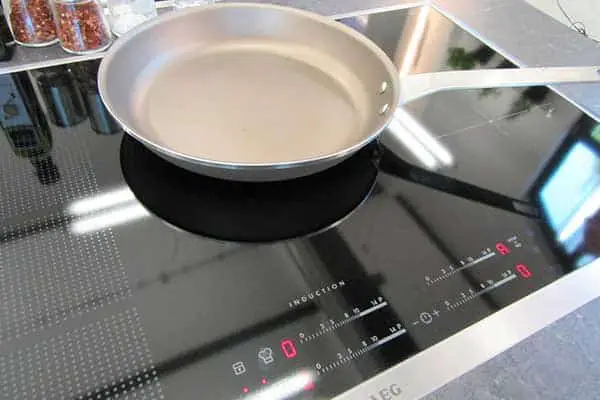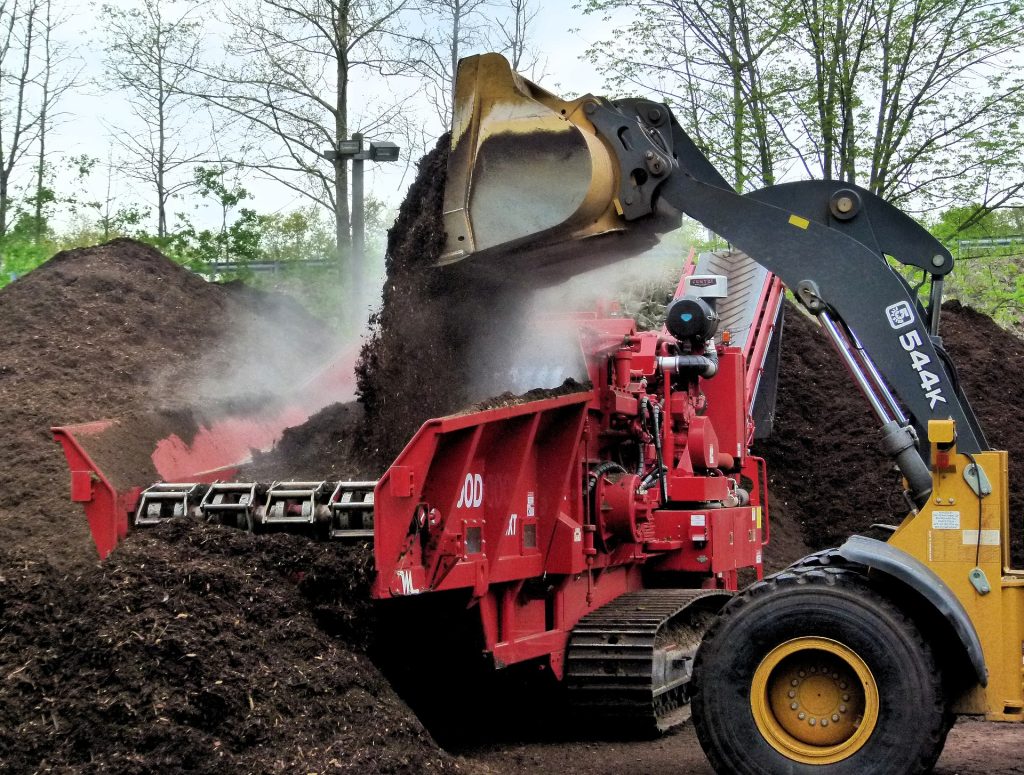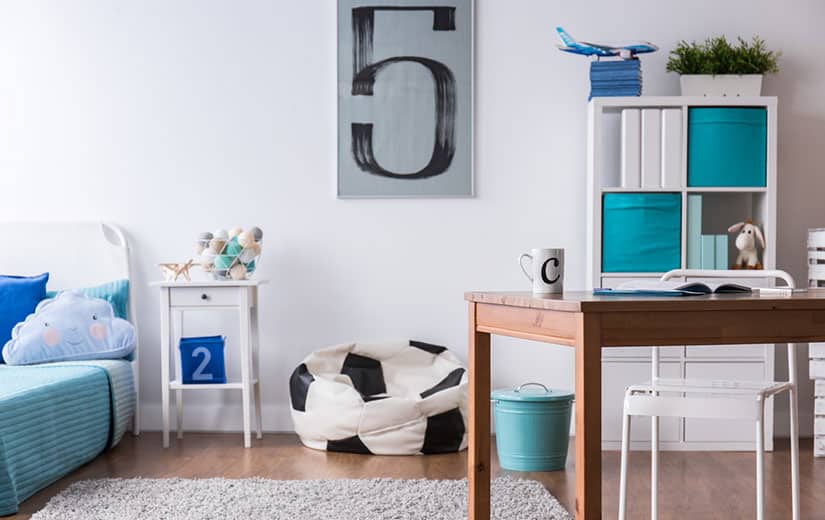Alongside gas cookers, appreciated by cooking purists, vitroceramic or induction hobs have largely invested French homes. Indeed, in 2017, 61% of households are equipped with a hob, and 56% of them are induction hobs. Easy to clean, existing with two or four hearths, these hobs fit perfectly into a fitted kitchen. There remains the question of choosing between a ceramic hob or an induction hob: what are the advantages and disadvantages of these two elements?
Summary
Vitroceramic hobs: heating principle
Ceramic hobs have been around for decades. They take the form of a plate made of black glass. In reality, there exists behind this same denomination two types of heating : the radiant hearth plate and the halogen hearth plate.
The ceramic hob with radiant hearth heats up thanks to the supply of resistors. When the electric current passes through these resistors, they heat up and allow the plate to increase in temperature. These plates thus transmit a diffuse and even heat to the pan throughout the cooking process.
There ceramic hob with halogen hearth has halogen lamps under the glass. When the plate is on, the lamp will produce heat which will be transmitted to the glass thanks to the principle of infrared. Unlike radiant hotplates, this one creates heat very quickly. It promotes cooking over « high heat », because it is more powerful than a radiant hearth plate.
Some plates available on the market combine the two cooking methods, favoring on the one hand the production of simmered dishes and on the other more lively cooking. Both types of plate have a glass that is very resistant to high temperatures, since it supports up to 750 degrees. Click here to learn more: https://youtu.be/bNo6hgURFpQ
The advantages of ceramic hobs
Vitroceramic hobs have largely replaced hotplates with cast iron hearths, which are still sometimes found in studios or apartments and which retain the advantage of being very inexpensive, around a few tens of dollars. euros. Compared to these predecessors, ceramic hobs promote faster heatingand therefore a reduced meal preparation time.
At cleaning levelthere are no photos, the vitroceramic plates have clearly facilitated this work, since a single wipe of the sponge is enough to find a clean plate.
In addition, ceramic hobs are cheap. The first two-burner models are sold at a price of less than 100 €. As for the models with three or four hearths, the prices start around 150 €, even if the top-of-the-range models go up to more than 400 €. A large proportion of commercial references are made up of radiant hearth plates, as the halogen tends to disappear little by little.
Finally, some plates have practical security systems : anti-overheating or anti-overflow of pans. This avoids missing dishes.
The disadvantages of ceramic hobs
While glass-ceramic hobs have many advantages, they also have disabling disadvantages. Among them are holding and heat after cooking. Indeed, these plates require in principle 30 minutes to return to an ambient temperature. Thus, the risk of burnsespecially for children, are important.
In addition, monitoring the cooking is difficult when you start with these plates. Indeed, even if they are much more efficient than cast iron hearth plates, lowering the heat of cooking will take a few seconds before this drop is really reflected in the container. Mastering cooking is therefore sometimes complex.
Finally, the third disadvantage and not the least, the power consumption. If halogen fireplaces are less and less present on the market, it is because this system is very energy-intensive. Radiant fireplaces, which are less powerful, consume less, which does not prevent them from also being energy-intensive. It is for these reasons that induction often takes precedence over glass-ceramic.
Induction hobs: heating principle
Induction hobs are relatively recent, since they were only developed for domestic use in the 1980s. If they have remained expensive for a long time, they have become widely popular over the past fifteen years, thus becoming the cooking system favorite of the French.
Induction hobs are actually ceramic hobs, because like the latter, they come in the form of a heating system with a black glass that will transmit the heat. On the other hand, the principle of heat creation is different: to put it simply, it comes from a magnetic field which is developed by an inductor present under the glass, when it is traversed by an electric current.
As with ceramic hobs, induction hobs come almost exclusively in the form of built-in models, although some portable models exist.
The advantages of induction hobs
Induction hobs allow temperature changes with very low reactivity times. Thus, if the temperature is too high, causing the food to burn, it will decrease in real time, as soon as the program is modified. There is very little risk of burning a dish.
The plates rise in temperature at the start of cooking very quickly. This time can also be shortened when the plate has a boost function. Thus, two to three minutes are enough to have a pot of boiling water.
These last two advantages come from the very operation of induction hobs, which have a very appreciable efficiency and yield. This is explained by the principle of induction: the plate does not really heat up, the heat will go directly to the bottom of the pan, which avoids heat dispersion. It is estimated that 90% of the heat produced will go directly to the pot or pan: in conventional gas or vitroceramic systems, there is more heat loss. In fact, the induction hob is rather economical in electricity, because it only consumes what it needs to create the heat.
A great advantage of induction is Security. The cooking surface rises very little in temperature and cools quickly after cooking. The risks of burns are less important. In addition, during heating, only the part supporting the container will heat up.
Finally, as with ceramic hobs, the cleaning is quick and easy. In addition, some features, such as the heat indicator, child safety, anti-overheating or timer function, make cooking much easier. Go to this link to learn more: https://youtu.be/BmsYZ9fdk2c
The disadvantages of induction hobs
In terms of the disadvantages of induction hobs, the one that comes up regularly is the need tobuy compatible pots and pans with induction. Indeed, these containers must allow induction, the most effective being those with a thick bottom. Indeed, this requires an additional investment, even if the cost of these containers tends to fall, with increasingly efficient entry-level models.
It is true that the purchase of an induction hob is more expensive than the purchase of ceramic hobs. But this price has really fallen continuously for ten years. It is now possible to find a plate with two hearths for 130 € and a plate with three or four hearths for 200 to 300 €. High-end models, however, can cost several thousand euros.
Thus, between induction and glass-ceramic, there is no comparison! While glass-ceramics still have the advantage of being more affordable, induction makes cooking easier and will gradually take over homes.




